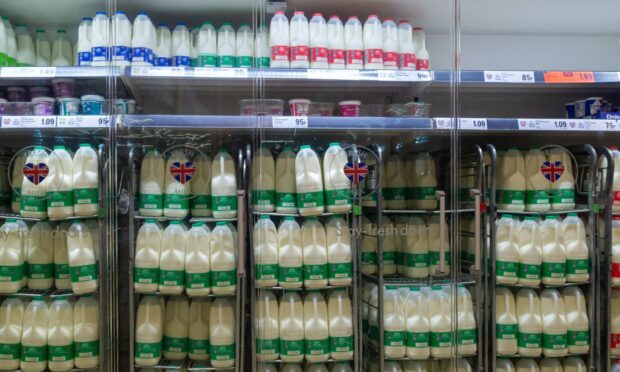NFU Scotland’s dairy policy manager says the union would welcome a meeting with major supermarket bosses following the cut in retail milk prices.
Tracey Roan called on fairness and transparency for the industry as Aldi, Lidl and Asda, have followed in the footsteps of Sainsbury’s and Tesco in announcing a reduction in the price of milk by around 5p per litre.
Supermarket bosses say they are focusing on the cost-of-living crisis but farmers are continuing to be faced with historically high input costs and poor prices for their milk.
Farmgate prices have fallen by around 10p per litre in recent months and costs of production are estimated to be around 43.5p per litre.
Ms Roan, who is a dairy farmer from Dumfriesshire, said the situation highlighted the lack of fairness in the supply chain.
Cost of production at 43.5p per litre
“While retailers may claim that those supplying them with fresh milk won’t be affected by price cuts on the shop shelf, it highlights the ability of retailers to target the weakest part of the chain first,” said Ms Roan.
“It adds urgency to NFU Scotland’s long running campaign to secure statutory contracts for the dairy sector to deliver fairness and transparency, with further revisions of a statutory instrument to deliver this being presented to both houses at Westminster in July before becoming law.
She said the slash in milk prices were disappointing to see when the biggest price increases seen on shop shelves were on imported food items that are often more highly processed and unsustainably produced than British milk and dairy produce.
“It is in everyone’s interests – retailers, consumers, and farmers – that fair returns are delivered across all parts of the dairy supply chain. That is why NFUS would welcome a meeting with the major supermarkets to discuss this further.”
Peterhead dairy farmer and NFUS milk committee chair Bruce Mackie, said the price of dairy feed for cattle is 30% higher than this time last year and the price of soya is more than 22% higher than in 2022.
“The price cuts for consumers will be welcome, given the cost-of-living crisis, but the cost of producing milk has not fallen in line,” said Mr Mackie.
“Additional milk production in February, probably driven by excellent silage made in the heat of last summer, did put pressure on the market and has been a factor in the 20% reduction in farmgate prices.”
Price of dairy feed for cattle is 30% higher on the year
He added that a cold March had corrected milk production, resulting in volumes being “neck and neck” with last year and below forecast.
“It should be noted already by other parts of the chain that this is a dry spring which may well restrict volumes going forward,” he said.
“It is important that the industry is financially sustainable if milk supplies are to be maintained so a return to price volatility is in nobody’s interests.”

